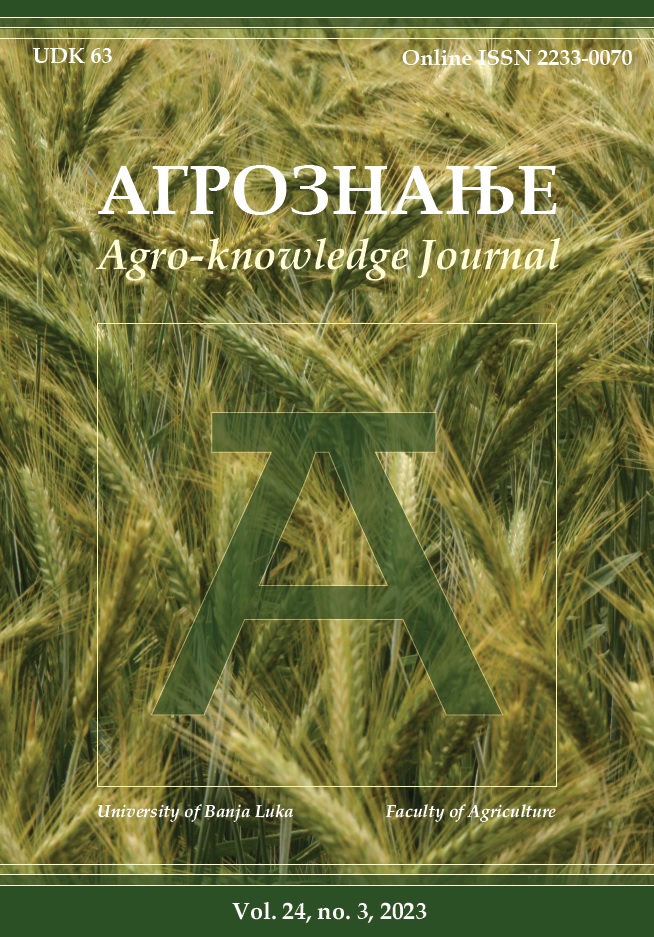The structure of rural households’ income in North Macedonia - A case study in Polog and Pelagonija
DOI:
https://doi.org/10.7251/AGREN2303117GJAbstract
Contemporary trends in rural economic development go beyond the concept that agriculture and food production are the only functions of the rural economy and move towards a broader concept that covers all resources in the rural area, including non-agricultural activities. This paper examines rural households’ economic diversification focusing on their income structure and its impact on their well-being. The paper is based on а questionnaire survey conducted in the year 2018, through direct visits and interviews of 140 rural households from two statistical regions in North Macedonia, Pelagonija and Polog, with carefully designed study’s sample selection methodology to capture the household characteristics. The household income structure is measured as net incomes from all on-farm and off-farm activities and other financial transfers for one calendar year. The analysis has shown that the households which have only one type of income source (I. households with on-farm incomes only from agricultural activities, II. households with on-farm incomes only from nonagricultural activities) have much lower financial success than ones with mixed income sources, while non-agricultural rural households achieve the least success. In addition, households with mixed income sources, including incomes from agriculture, have better financial results than other households with mixed income sources, which do not comprise agricultural incomes. Hence, the challenge for policymakers is to identify the best mechanism to promote rural households’ economic portfolio, with a well-balanced synergy between agricultural and non-agricultural activities, based on agriculture at the centre of rural development, as complementary engines to tackle rural poverty and provide food security.

